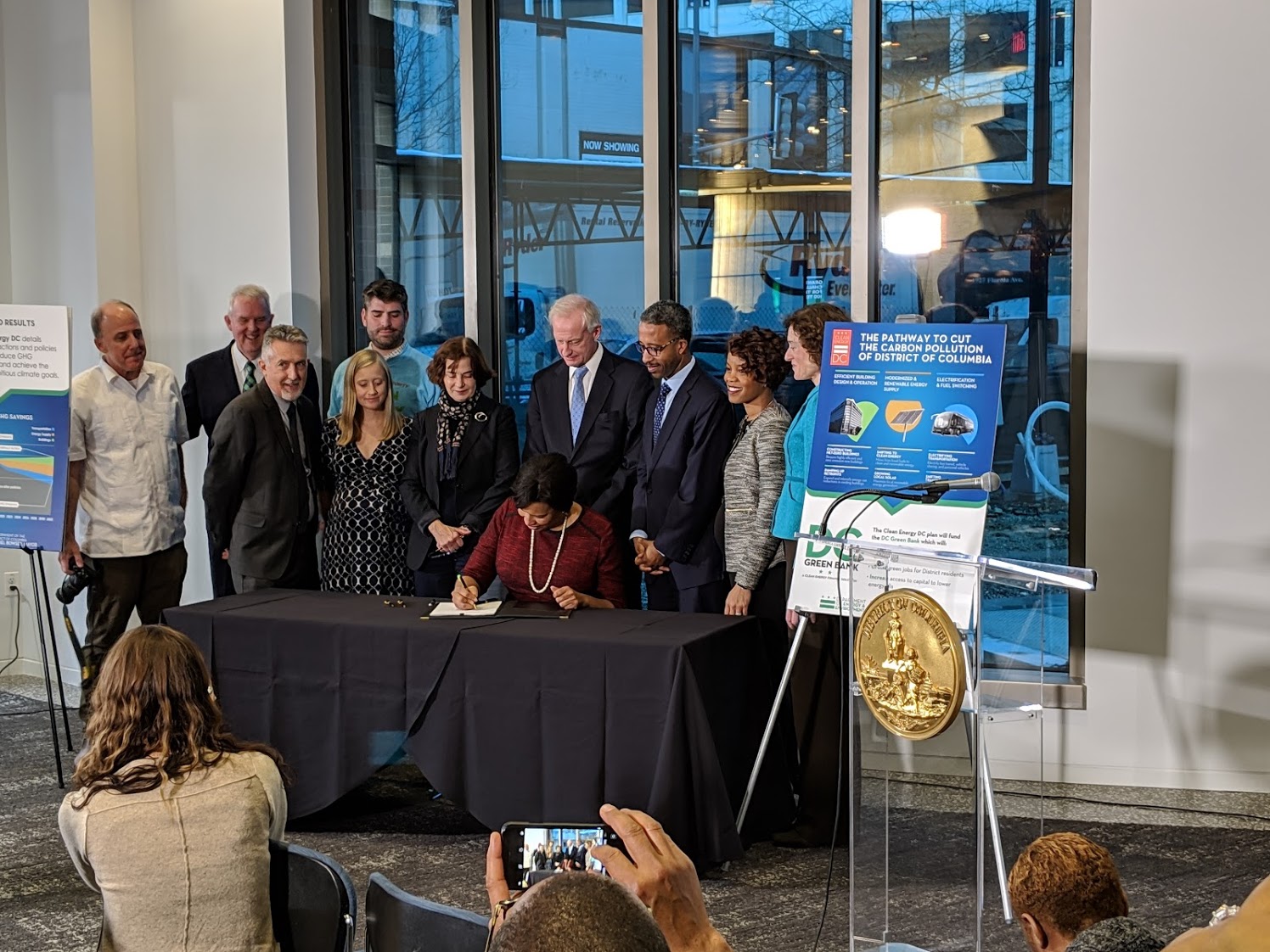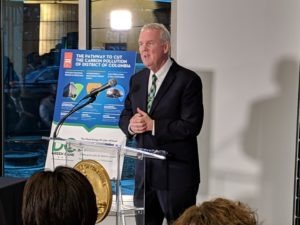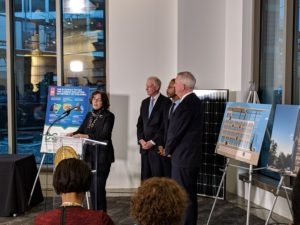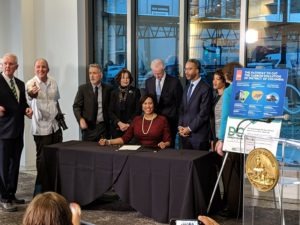

Blog
The new law has several sections which will impact the buildings in which DC residents and businesses live and work. In this post, we’re going to focus on Title III of the Clean Energy Omnibus Amendment Act, which is designed to make the city’s existing buildings more efficient.


District of Columbia Mayor, Muriel Bowser, signed a landmark piece of legislation known as the Clean Energy DC Omnibus Amendment Act this past Friday. With the mayor’s signing, Washington, DC becomes one of the first jurisdictions in the country with a binding, comprehensive law aimed at reducing greenhouse gas emissions. “It allows us to make significant improvements to the energy efficiency of existing buildings in the District,” Mayor Bowser said at the signing ceremony.
The new law has several sections which will impact the buildings in which DC residents and businesses live and work. In this post, we’re going to focus on Title III of the Clean Energy Omnibus Amendment Act, which is designed to make the city’s existing buildings more efficient.
Title III focuses on improving the energy efficiency of existing buildings. In short, this section of the law requires that existing buildings demonstrate a minimum level of energy efficiency to meet the Building Energy Performance Standards (BEPS). Buildings will demonstrate compliance with the performance standards by tracking annual energy consumption through the established Energy Benchmarking program. Buildings that perform below the median baseline established by DC’s Department of Energy and Environment (DOEE) will then need to demonstrate improvement or face financial fines.


Due to the District’s unique status as a city/state, 74% of all greenhouse gas emissions in the city are attributed to buildings. This is much higher than the national average, which is around 40%. Since buildings represent such a large percentage of energy consumption and emissions in DC, all buildings will need to see energy consumption reductions for the city to meet its greenhouse gas reduction targets.
The BEPS program will utilize data gathered through the existing Energy Benchmarking program to establish a median performance standard every five years. The performance standard will be based on ENERGY STAR scores for each building type. If a building’s rating is above the established median, it will pass and be evaluated again during the next five-year period. Buildings that perform below the median standard will need to take immediate action to reduce energy consumption. Buildings can comply by either:
Additional pathways for compliance may be determined by DOEE prior to the first baseline being established. Also, the law gives DOEE mandate to set campus-wide standards for universities, hospitals, and other areas with multiple related buildings.
In addition to establishing a median baseline, the law adds a new requirement to the existing Energy Benchmarking program requirements; making all participating buildings submit verified benchmarking data every three years.

The new law impacts different buildings at different times. If your building is already participating in DC’s Energy Benchmarking program, you will be impacted first. Here’s the timeline for the BEPS roll out.
We recommend that you start planning for the impacts of this new law right away. If you know your building’s ENERGY STAR score, that’s a good start. If you know that your building’s performance needs to be improved, now is the time to start assembling a strategy that includes no-to-low-cost improvements and high-value capital improvements. If you need help or have any questions about how this will impact your building, we can help. Our team of experts are happy to help you prepare for a more energy efficient future.
Contributor: Sean Fish, Senior Sustainability Consultant
Steven Winter Associates